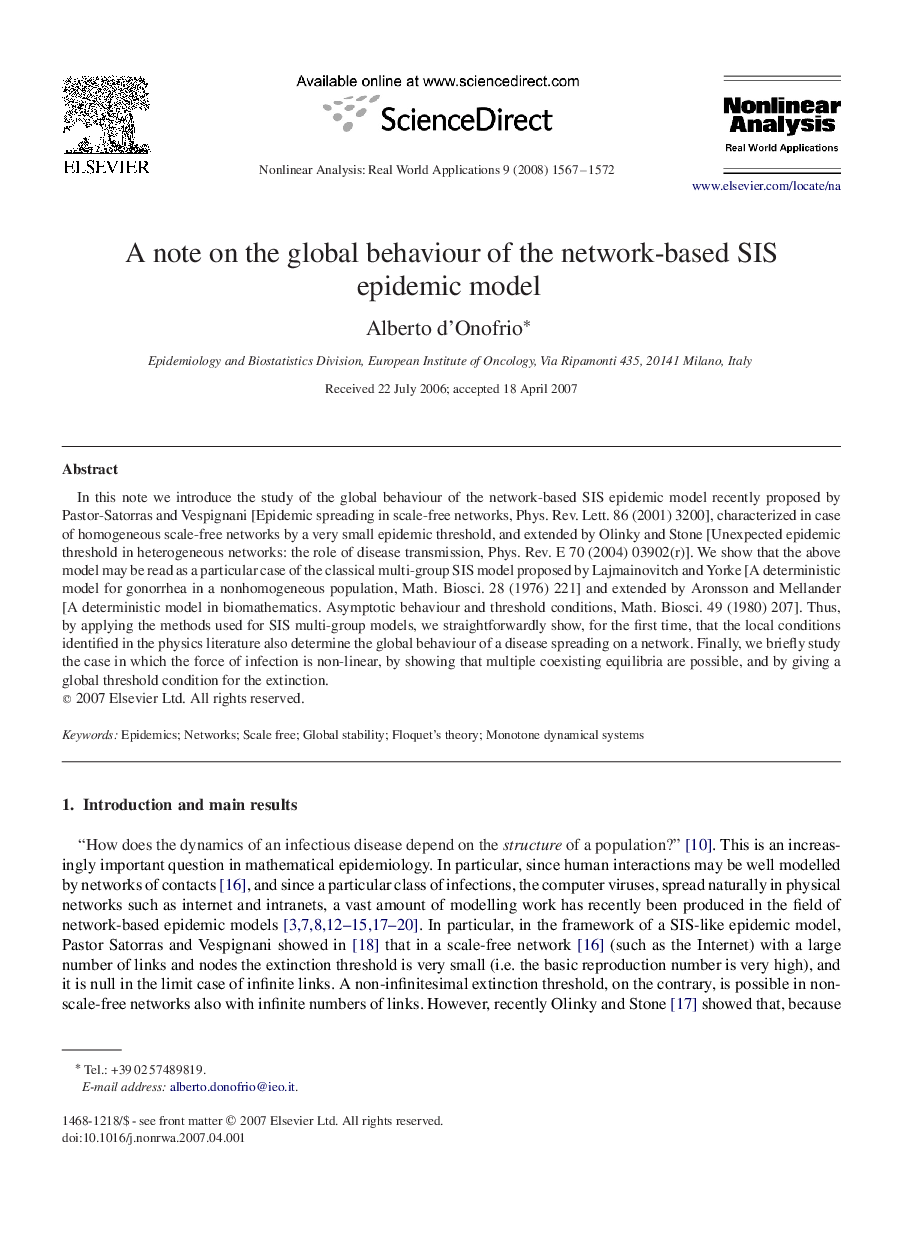| Article ID | Journal | Published Year | Pages | File Type |
|---|---|---|---|---|
| 839082 | Nonlinear Analysis: Real World Applications | 2008 | 6 Pages |
In this note we introduce the study of the global behaviour of the network-based SIS epidemic model recently proposed by Pastor-Satorras and Vespignani [Epidemic spreading in scale-free networks, Phys. Rev. Lett. 86 (2001) 3200], characterized in case of homogeneous scale-free networks by a very small epidemic threshold, and extended by Olinky and Stone [Unexpected epidemic threshold in heterogeneous networks: the role of disease transmission, Phys. Rev. E 70 (2004) 03902(r)]. We show that the above model may be read as a particular case of the classical multi-group SIS model proposed by Lajmainovitch and Yorke [A deterministic model for gonorrhea in a nonhomogeneous population, Math. Biosci. 28 (1976) 221] and extended by Aronsson and Mellander [A deterministic model in biomathematics. Asymptotic behaviour and threshold conditions, Math. Biosci. 49 (1980) 207]. Thus, by applying the methods used for SIS multi-group models, we straightforwardly show, for the first time, that the local conditions identified in the physics literature also determine the global behaviour of a disease spreading on a network. Finally, we briefly study the case in which the force of infection is non-linear, by showing that multiple coexisting equilibria are possible, and by giving a global threshold condition for the extinction.
